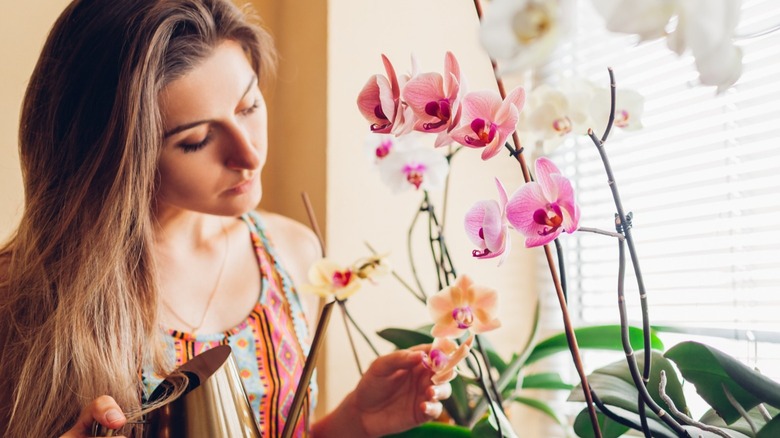Can You Save An Overwatered Orchid Plant?
If you have an orchid plant you're having trouble with, don't feel bad, it happens to the best of gardeners. Orchids can be tedious to care for, and they're extremely easy to over-water. If yours has started to droop, take heart – yes, most of the time you can save an over-watered orchid plant! There are several steps you must complete in order to do so, and we're going to tell you how. But first, let's talk a little bit about why orchids have such a bad reputation in the first place.
Orchids are not actually as hard to grow as you might think, especially once you understand that they thrive on neglect. That's right -– they do best when you simply leave them alone most of the time. In fact, don't water your orchids until the potting mix is bone dry. They can survive for an extraordinarily long time with no water, and when people kill their orchids, it's usually due to trying to pamper them in one way or another. So once we save your over-watered orchid, just ignore it most of the time and it should do fine!
Dry out, remove from pot and trim roots
The first step is to allow the plant to completely dry out for several days. Then remove it carefully from its container and shake the medium from the roots to inspect them for damage and root rot. The roots should be firm and white, and green is also healthy. If you see brown or mushy roots, that's evidence of root rot and you'll need to cut off the damaged roots with sterilized shears or scissors. As long as you have enough healthy roots left, it's saveable.
Make sure you sterilize your shears before, during, and after you clean and trim up the roots. Rinse the healthy roots off well when finished, then set the remaining plant carefully on a towel to dry them. You will need to repot the orchid and use new potting mix, or you can use the same pot if it's adequately sized and has plenty of drainage. A smaller container should have at least four drainage holes, and the bigger the pot, the more they need. Make sure you add some to yours if necessary. If you do use the same pot, wash it thoroughly with soap and water. If you use a drainage tray, also wash it thoroughly.
Finish repotting and how to water in the future to prevent the problem
Make sure you're using fresh orchid potting mix made especially for orchids. Wet the medium after filling the container until it's just until slightly damp. Gently place the orchid in the container and spread the roots out. Loosely cover the roots with additional potting mix, taking special care to ensure they can still breathe. Place the orchid in a spot where it gets at least indirect sunlight most of the day.
Refrain from watering it again until the medium is completely dry at least one full inch down, and keep that same routine. You should really be allowing the growing medium to nearly dry completely out in-between waterings. Don't give in if it doesn't immediately perk back up; they can be slow to show progress. Be sure to check periodically to ensure the drainage holes don't become blocked.
There are two methods that are recommended. One is to water it in the sink by turning on the water (lukewarm) and letting it run for 15 to 30 seconds, then allow it to drain for at least half an hour afterwards. The other is to water from the bottom and the roots will draw up what they need. Place the container in a drain tray with at least an inch of water. Let it sit in it for 15 to 30 minutes. Afterwards, empty the drain tray and let it drain for another half hour before removing.


